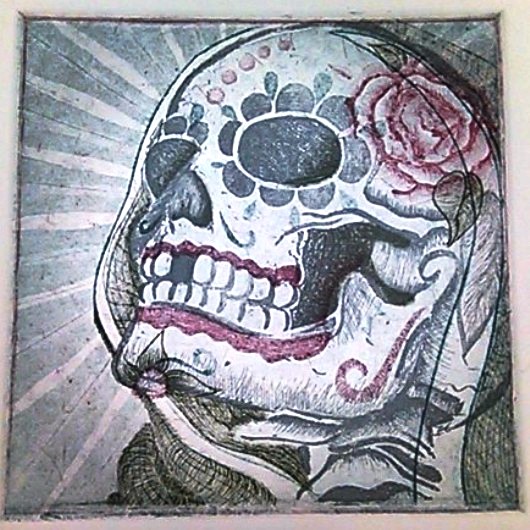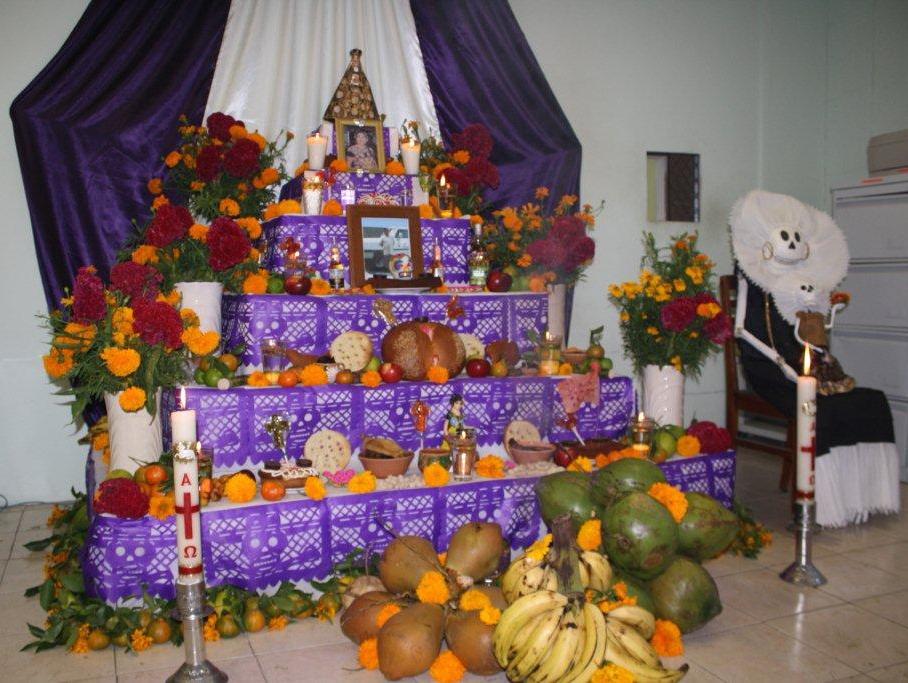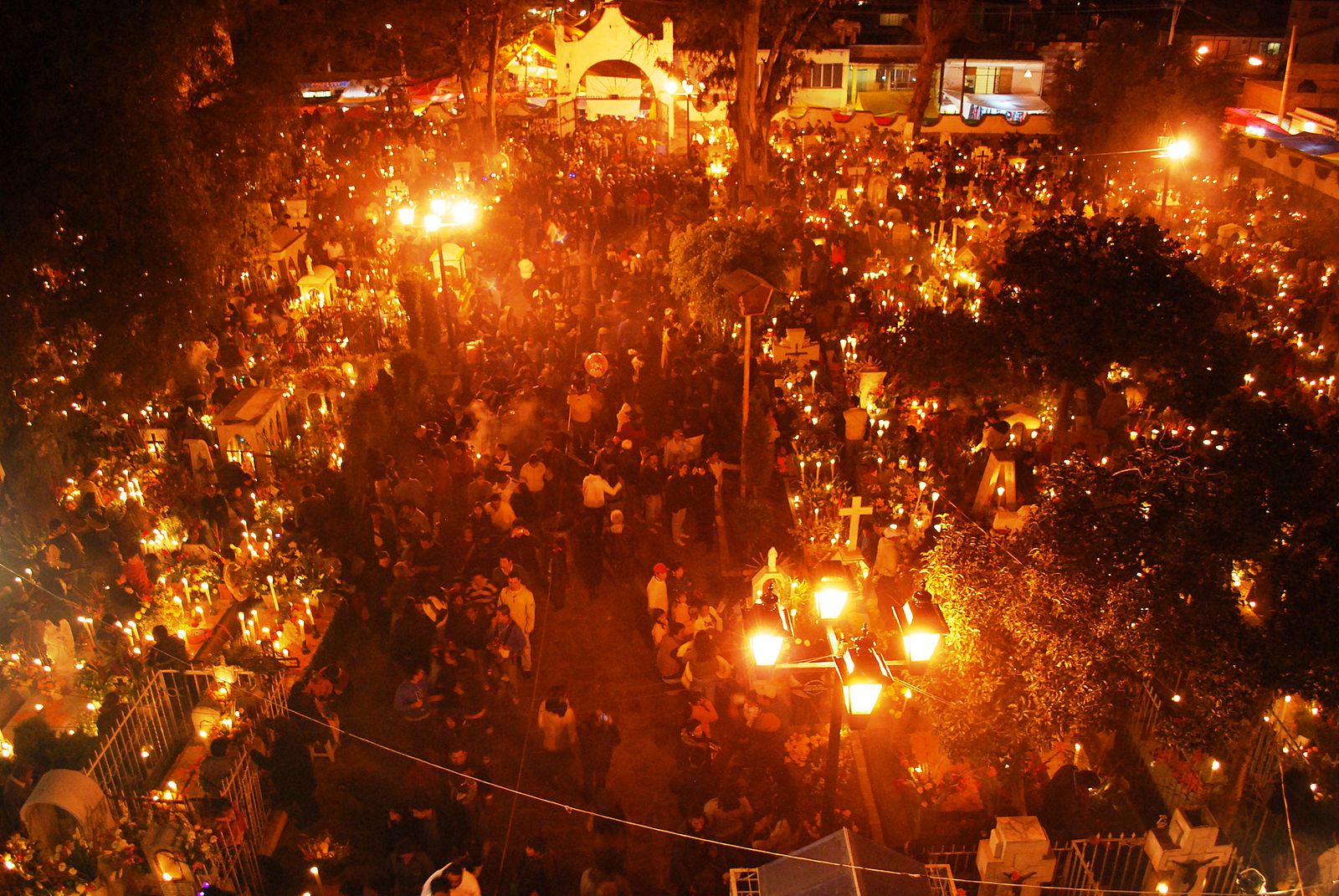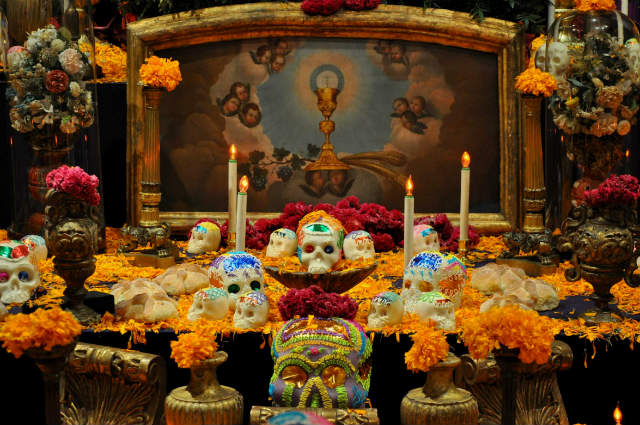‘Día de los Muertos’ | Mexico / California
Dig into some of the history of Día de los Muertos, a huge celebration that pays homage to loved ones who are no longer living.

The celebration of death and the dead is often considered morbid and dark but these festivities have been present in many societies/civilizations since ancient times, and have kept on as a strong tradition in many cultures today.
Día de los Muertos or the ‘Day of the Dead’, as it is known in English, is one of the liveliest celebrations in Latin American culture, bringing together family, friends, and the spirits of deceased loved ones for a couple of nights a year. It is a time to honor and remember ancestors for the love they showed and the lessons they taught when they were still alive. Families show appreciation for everything their ancestors did to make sure their families would be taken care of for generations to come and, most importantly, to let the spirits know that they will always be loved and never forgotten.

The ritual begins on October 31st and continues through November 2nd, with skeletons, skulls, and spirits shown outside of houses and in public places, so it is often confused with Halloween. But they don’t really have much in common. Halloween has lost track of its origins in the Celtic Samhain; a celebration of the harvest and fertility that was Christianized as All Hallows' Eve, and has now become a commercial holiday. Unfortunately the celebration of Día de los Muertos is now mixed and confused with that of Halloween.
Those who do not hold positions of power in a society rarely get to write their own side of history, so the memories of the origin and true meanings of celebrations are often lost. It is important that we re-appropriate the knowledge of the origins of this holiday to preserve its sacred and spiritual character, before it becomes just another Mardi Gras.
Día de los Muertos originated as a Mesoamerican indigenous tradition, celebrated in what is now Mexico, Central America, and parts of South America. One of the biggest celebrations happens in Oaxaca, Mexico, where there is still a very large indigenous population. During this time of year, people gather together weeks in advance to prepare for the festivities by making beautiful decorations, cooking the deceased’s favorite foods, baking ‘pan de muerto’ (bread of the dead), buying and growing cempasúchil flowers (marigolds), and preparing elaborate altars as gifts to pay respects to the departed.

These gifts to the spirits are called ‘ofrendas’ or offerings, and are one of the most important parts of the celebration. The offerings are placed on the spirits’ altars, alongside symbols of the four life elements and images of the deceased. This is to represent the entirety of life: water (in a vessel), wind (papel picado), earth (food and flowers), and fire (candles and incense). Those who truly celebrate – not ‘party’ for - the Day of the Dead believe that during these two to three days, the spirits will return to visit their families. They come back to their homes, guided by the good smells of their favorite foods, the strong scent of cempasúchiles and incense, and the lit candles leading up to the altars that their families have built and dedicated to them.
These preparations are later followed by a procession to the cemetery, where families clean and decorate their loved ones’ graves, then eat, drink and play live music in memory of the deceased, bringing the whole cemetery to life. There is nothing somber, macabre, or mournful about this festivity. It is quite the opposite, since the main aspects of it are love and respect, which make it a unique and colorful celebration of life itself. Some customs and traditions change depending on different locations, but these are the most common ways that Día de los Muertos in the Americas are celebrated.

For centuries, Indigenous people have believed that death is part of the journey of life—a duality that does not bring life to an end, but instead offers a beginning to a new and eternal life, one of peace, detached from all of earth’s suffering. Death as a negative concept was not part of Mesoamerican indigenous culture until the Spaniards came to their land. With them they brought Christian concepts of Heaven and Hell, and thus the idea that the afterlife could be a place of suffering.
Originally, pre-Columbian societies celebrated Día de los Muertos during the whole month of August but, upon its hybridization with Christianity, it was moved to the 1st and 2nd of November, so that, given the similarities in the celebration of the dead, it would coincide with All Saints day and All Souls day of the Christian calendar. However, the celebrations that occur today are proof that the new religion brought by the Spaniards could not tear the indigenous people away from their traditions and their memories. Instead of trying to ban Día de los Muertos—which would have been futile— the church used the holiday to its advantage, so that the ‘conversion’ to Christianity would be more appealing to the indigenous people.

The iconography of the holiday was also hybridized with Christian symbols; an ubiquitous image for this holiday, like the sugar skull, was introduced to the indigenous by the Spaniards, and was originally an Italian custom for All Saints and All Souls days… This cultural syncretism shows the depth of the influence of colonization on the indigenous traditions.
Despite all of this, Día de los Muertos has managed to preserve its meaning after hundreds of years, always going back to what is important: the love and respect for our ancestors and the memories and stories they have passed on to us. It is an acknowledgement to the fact that, if it were not for them, we would not be here today. So even if you do not particularly believe in spirits or life after death, I invite you, on this 2nd of November, to humbly light a candle for the memory of your friends and loved ones who have passed, and reflect on what they did for you and your family when they were living.
